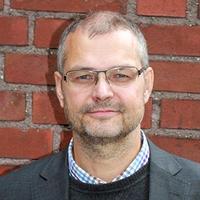How ABE measures up in KTH's annual bibliometric monitoring
The Annual Bibliometric Monitoring (ABM) 2021 has now available. The analysis contains, among other things, information on publication volume, citation impact and co-publication. Results are presented for KTH overall as well as at school, department, division and individual level. Deputy Head of School Mats Wilhelmsson has looked at the ABE school's results.

What is the purpose of this type of follow-up and how is it used at the school?
"The purpose of ABM is to increase the understanding of the research we publish and to gain knowledge about where and how our research is disseminated. One goal of the ABM is to create greater impact for KTH's research. The results are used as an indicator in KTH's quality system, and at the school we use the statistics to measure publications, citations and impact over time."
What do this year's statistics say about the ABE school's publications?
"What we can see is that the number of publications has decreased slowly over a long period of time. There is particular reduction in conference papers, but we do not yet see any clear effect of the pandemic year 2020. Much of what has been done during this time will be published in the coming year, so we will probably only see in the next ÅBU if there is a difference. The number of articles published in scientific journals has been at the same level over the past 6-7 years, including this year."
The school's researchers publish about 400 articles per year. At departmental level, the larger departments publish more articles, but if when the number of employees as well as internal and external funds are taken into account, it is quite even between different organisational units at the school.
What does the ABE statistics look like in relation to the rest of KTH?
"For co-publications, we deviate a little from KTH as a whole. At the ABE school we often write articles ourselves or together with others from the school, we have a lower proportion of articles written together with colleagues at international universities (Just under 50% of our articles compared to 70% for KTH as a whole). A large part of our research is applied in the Swedish context with Swedish case studies, so it may explain that it is not always suitable for international collaborations. Instead, we have a higher proportion of co-publications with important national academic environments outside the higher education sector (IVL, RISE, etc.), where the figure is 27% for us at ABE and 18% for KTH as a whole. With regard to corporate collaborations, there is no real difference between ABE's and KTH's results."
Quotations, co-publications and Open Access
The ABM shows statistics regarding citations and co-publication based on the subset of publications in DiVA that are registered in Web of Science or Scopus. 76% of what the ABE school publishes in DiVA is included in the Web of Science and 91% in Scopus.
"When you look at the statistics for citations, we are in a good position, but slightly lower than the average at KTH. One explanation we see is that the school's research is often published in newer journals that are not always included in Web of Science or Scopus. We are for example often published in Sustainability, which has a large societal impact but may not be as academically meritorious. We are good at finding the publications that are important to our subject areas."
During the years 2018-2020, more than half (56%) of ABE article publications come from journals that are in the top 20, which is higher than KTH's average (51%). The investments that have been made on Open Access in recent years have also clearly had a major impact. At ABE, about 70% of all publications are now available via Open Access, which is slightly higher than for KTH as a whole. In 2014, that figure was 27%.
"It is very gratifying that we can already see that two thirds of what we published in 2020 has been quoted, which is slightly higher than KTH's average. If we look back a couple of years, almost 90% of the school's published articles are quoted."
